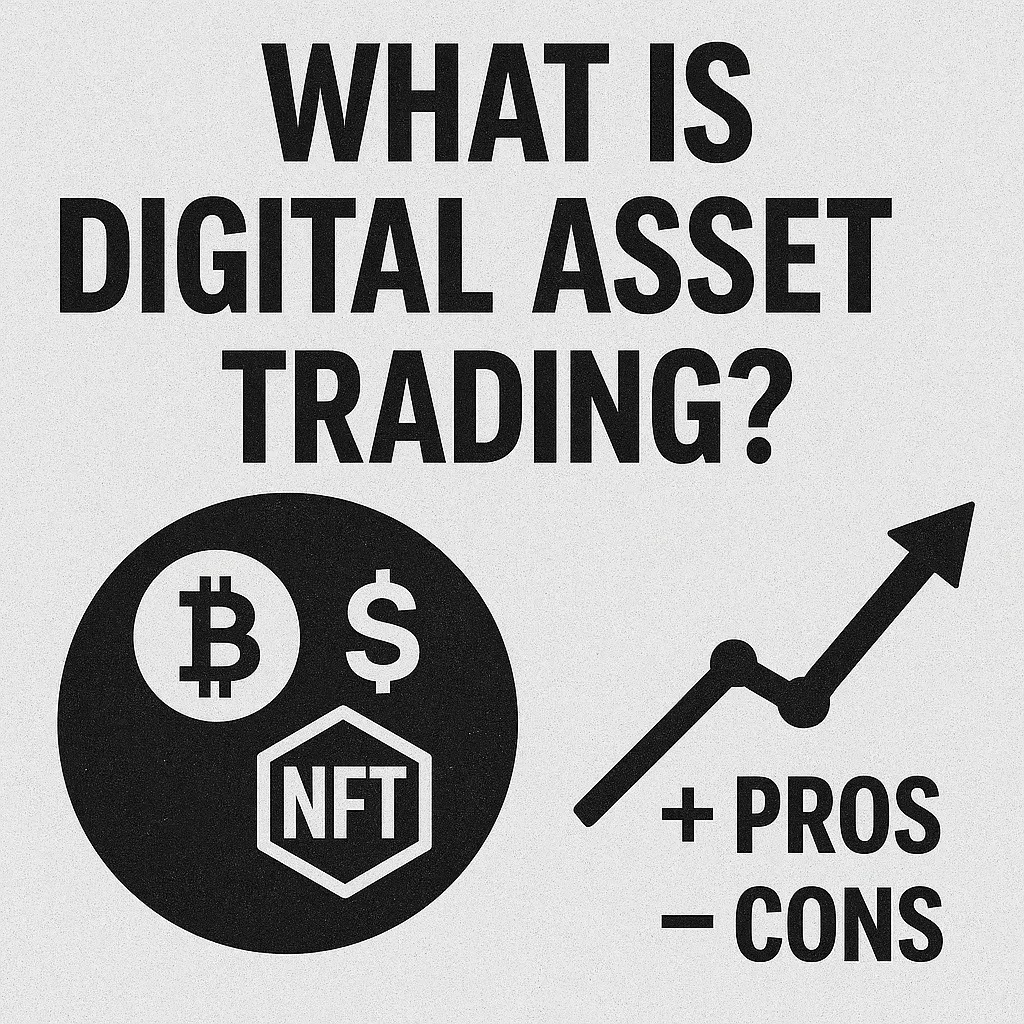
What is Digital Asset Trading and Why It’s Reshaping Modern Finance
Originally the preserve of tech enthusiasts and cryptography experts, digital asset trading has rapidly evolved into a mainstream financial activity, transforming how investors interact with everything from cryptocurrencies to tokenised real-world assets.
Whether you're trading Bitcoin, buying NFTs, or investing in tokenised stocks, understanding the dynamics of digital asset trading is essential in today’s decentralised world.
What Are Digital Assets?
Digital assets are any assets stored and transferred electronically on a blockchain or distributed ledger. These include:
- Cryptocurrencies (e.g. Bitcoin, Ethereum)
- Stablecoins (e.g. USDT, USDC)
- NFTs (Non-Fungible Tokens representing art, collectibles, or media)
- Tokenised securities (e.g. stocks or real estate digitised on blockchain)
- Utility and governance tokens
Unlike traditional assets, digital assets are programmable, borderless, and tradable 24/7, offering new dimensions of liquidity and ownership.
How Does Digital Asset Trading Work?
Digital asset trading takes place on two main platforms:
- Centralised Exchanges (CEXs)
Platforms like Binance, Coinbase, and Kraken offer user-friendly interfaces and custodial wallet services. They allow you to trade crypto using fiat (GBP, USD) and provide order books, market charts, and liquidity. - Decentralised Exchanges (DEXs)
Protocols like Uniswap, SushiSwap, or PancakeSwap operate without intermediaries. Trades occur peer-to-peer using smart contracts, offering more privacy but also more responsibility.
Trades can involve:
- Spot trading: buying and selling assets at market price.
- Derivatives trading: speculating on price movements using futures, perpetuals, and options.
- Staking and yield farming: earning passive income through decentralised finance (DeFi).
Why Is Digital Asset Trading So Popular?
- 24/7 Market Access: Unlike stock markets, crypto markets never close.
- Low Barriers to Entry: Start trading with as little as £10.
- Global Liquidity: Accessible to anyone with an internet connection.
- High Volatility = High Potential Returns: The fast-moving nature of digital assets attracts many traders despite their risk.
Risks and Challenges
- Volatility: Prices can swing by double digits in hours.
- Regulatory uncertainty: Different countries treat digital assets differently.
- Security risks: Wallet hacks and phishing attacks remain common.
- Scams and rug pulls: The unregulated nature of DeFi requires caution.
Always use two-factor authentication, trade on reputable platforms, and do your research (DYOR) before committing funds.
The Future of Trading is Digital
The digital asset space is constantly evolving, from asset tokenisation to AI-driven trading bots. As institutional investors enter the scene and governments craft clearer regulations, digital asset trading is poised to become a permanent fixture in global finance.
Stay on top of any cryptocurrency news by following us on X @ouinex